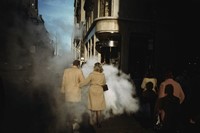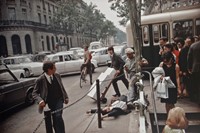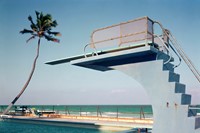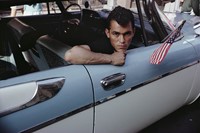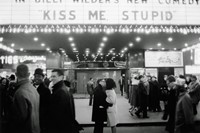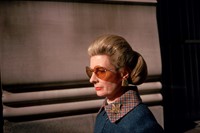A new exhibition at London’s Beetles+Huxley gallery shines a fascinating light on the glorious early years of the pioneering American image-maker Joel Meyerowitz
Who? American image-maker Joel Meyerowitz is one of colour photography’s greatest pioneers. Alongside fellow visionaries William Eggleston and Stephen Shore, he fought and succeeded in proving the integrity and artistic value of the medium at a time when it was widely shunned in favour of its revered monochrome predecessor. Meyerowitz was born in New York City in 1938, and studied painting and medical drawing at Ohio State University before joining a New York advertising agency as an art director. In 1962, he collaborated on a book project with the great Robert Frank, and was so moved by the photographer’s fluid approach – “it was all so physical, balletic and magical,” he recalled in an interview with Leica – and the poetic results it yielded, that he returned to the office after the shoot and announced he was quitting to pursue image-making.
Inspired by Frank and the work of Henri Cartier-Bresson, Meyerowitz purchased a 35mm camera and headed out to document life in and around New York City, working alongside fellow street photographers Garry Winogrand and Tony Ray-Jones. These early works were carried out in black and white, but Meyerowitz always felt an irrepressible desire to shoot in colour. “I had this feeling that colour had more to say,” he explained to Leica. “If photography is about describing things, then colour describes more things, so I felt that was it.” Thereafter he purchased two Leicas, one colour, one black and white, and where possible took the same shot first with one camera and then the other so that he could compare and contrast the effects. “I wanted to be an intellectual advocate for colour,” he said. Eventually, intuitions confirmed, Meyerowitz embraced colour as his primary medium, going on to capture some of the most striking, lyrical and sumptuously hued photographs of the 20th century.
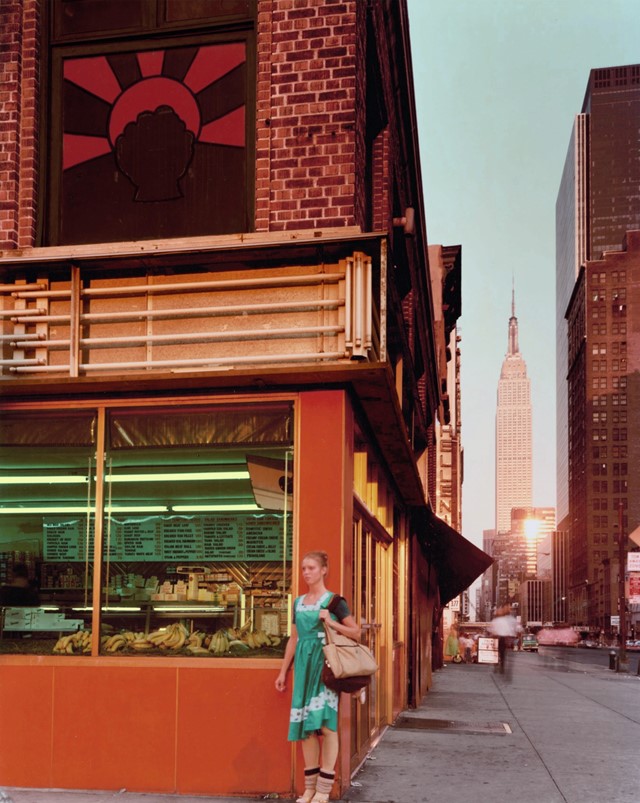
What? Now, a new exhibition at London’s Beetles+Huxley serves to spotlight the photographer’s gradual transition from black and white to colour, tracing his development through numerous bodies of work made between 1963 and 1978, the year he published his seminal colour photography book, Cape Light. Early monochrome images such as 1965’s Kiss Me Stupid, which sees a lip-locked couple ardently obeying instructions underneath a sign for the 1964 movie, show Meyerowitz’s skill for snapping what he terms “caught moments” in the vein of Cartier-Bresson. The same applies to his wonderfully spirited pictures taken during a trip he took across Europe in 1966: a chic, middle-aged couple astride a motorcycle glance at the camera, clothes billowing, the foliage behind them a grainy blur; a Spanish woman with a bucket tucked under her arm stands perfectly framed by two tall, drooping plants in a doorway.

Colour street photographs taken in early 70s New York allow us to witness Meyerowitz’s extraordinary eye for timing and complementary hues. Case in point: the brilliant picture of a woman in a green sundress, standing as erect as the Empire State building behind her, against an orange shop wall, its tinted windows the exact same tone as her clothing. Other images explore the photographer’s shift in interest from “captured moments” to non-hierarchical imagery, whereby all elements of the photograph – subject matter, colour, form, composition and so on – play an equally important role. These revolutionary “field photographs”, as Meyerowitz terms them, were taken on a large-format camera, allowing the image-maker a slower, more meditative approach, which beautifully manifests itself in the images themselves. Take his stunning photograph of a diving board in Florida, for example: a perfectly balanced melange of dreamy shades, contrasting shapes and textures, and interesting forms, which can send you spiralling into a deep, contemplative reverie as effectively as any Rothko painting.

Why? Over the course of his 55-year career, Meyerowitz’s enduring curiosity and devotion to both colour and colour photography have seen him frequently push at the boundaries of his medium. He has experimented in portraiture, still life, landscape and beyond, produced numerous photo books and was the only photographer given unlimited access to the Ground Zero site in the aftermath of 9/11. The Beetles+Huxley show is a wonderful chance to reexamine his formative photographic years, and the development of the techniques and tenets that have come to define his practice. Meyerowitz views photography as a philosophy, a chance to preserve fleeting moments of beauty, and this is apparent from the very start. As he once said, in a statement that excellently encapsulates the power of his work: “We all experience those moments when we gasp and say, ‘Oh, look at that.’ Maybe it’s nothing more than the way a shadow glides across a face, but in that split second, when you realise something truly remarkable is happening and disappearing right in front of you, if you can pass a camera before your eye, you’ll tear a piece of time out of the whole, and in a breath, rescue it and give it new meaning.”

Joel Meyerowitz, Towards Colour: 1962-1978 at Beetles+Huxley runs until June 24, 2017.

